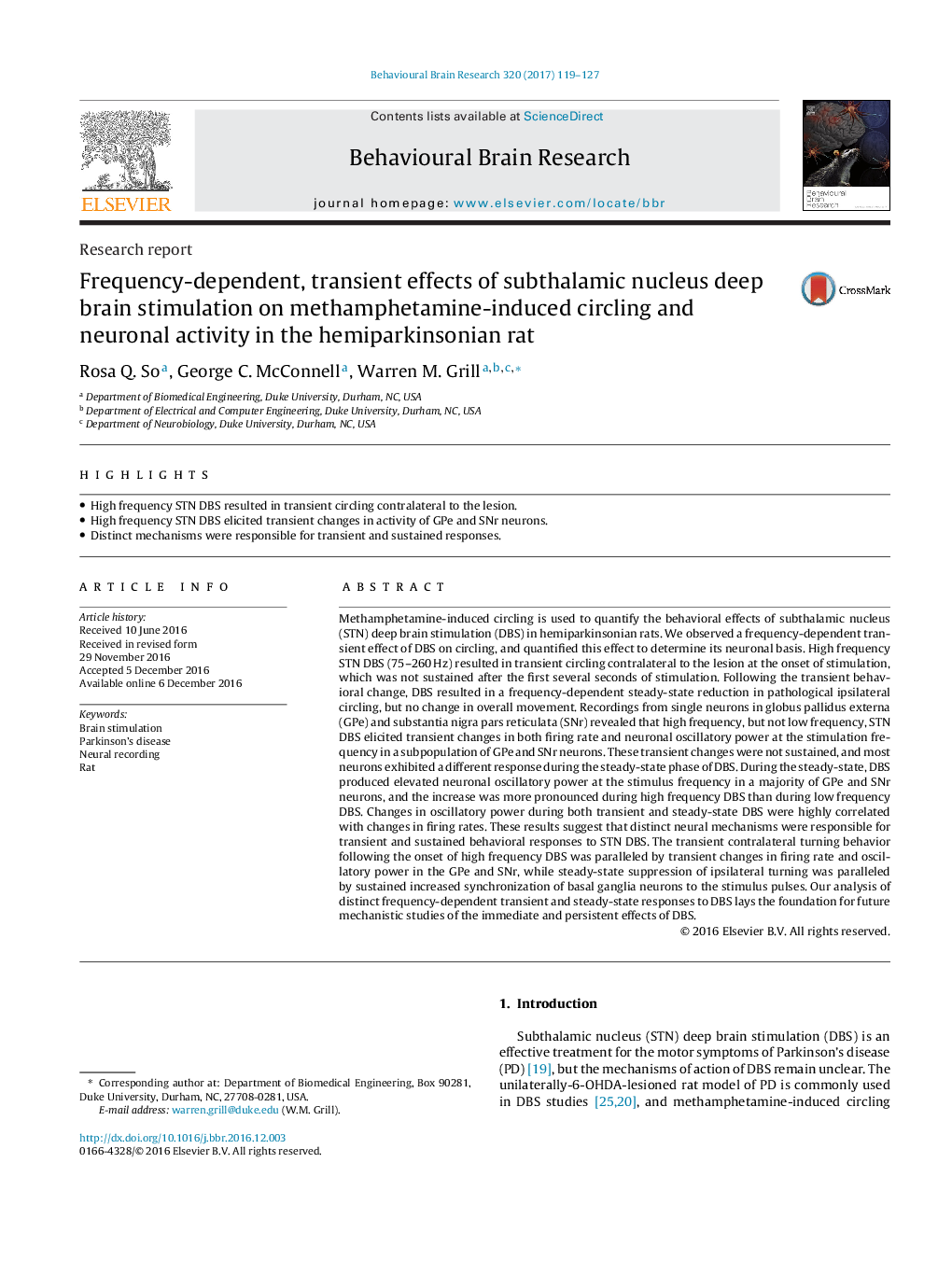| کد مقاله | کد نشریه | سال انتشار | مقاله انگلیسی | نسخه تمام متن |
|---|---|---|---|---|
| 5735654 | 1612913 | 2017 | 9 صفحه PDF | دانلود رایگان |
عنوان انگلیسی مقاله ISI
Frequency-dependent, transient effects of subthalamic nucleus deep brain stimulation on methamphetamine-induced circling and neuronal activity in the hemiparkinsonian rat
دانلود مقاله + سفارش ترجمه
دانلود مقاله ISI انگلیسی
رایگان برای ایرانیان
کلمات کلیدی
موضوعات مرتبط
علوم زیستی و بیوفناوری
علم عصب شناسی
علوم اعصاب رفتاری
پیش نمایش صفحه اول مقاله

چکیده انگلیسی
Methamphetamine-induced circling is used to quantify the behavioral effects of subthalamic nucleus (STN) deep brain stimulation (DBS) in hemiparkinsonian rats. We observed a frequency-dependent transient effect of DBS on circling, and quantified this effect to determine its neuronal basis. High frequency STN DBS (75-260Â Hz) resulted in transient circling contralateral to the lesion at the onset of stimulation, which was not sustained after the first several seconds of stimulation. Following the transient behavioral change, DBS resulted in a frequency-dependent steady-state reduction in pathological ipsilateral circling, but no change in overall movement. Recordings from single neurons in globus pallidus externa (GPe) and substantia nigra pars reticulata (SNr) revealed that high frequency, but not low frequency, STN DBS elicited transient changes in both firing rate and neuronal oscillatory power at the stimulation frequency in a subpopulation of GPe and SNr neurons. These transient changes were not sustained, and most neurons exhibited a different response during the steady-state phase of DBS. During the steady-state, DBS produced elevated neuronal oscillatory power at the stimulus frequency in a majority of GPe and SNr neurons, and the increase was more pronounced during high frequency DBS than during low frequency DBS. Changes in oscillatory power during both transient and steady-state DBS were highly correlated with changes in firing rates. These results suggest that distinct neural mechanisms were responsible for transient and sustained behavioral responses to STN DBS. The transient contralateral turning behavior following the onset of high frequency DBS was paralleled by transient changes in firing rate and oscillatory power in the GPe and SNr, while steady-state suppression of ipsilateral turning was paralleled by sustained increased synchronization of basal ganglia neurons to the stimulus pulses. Our analysis of distinct frequency-dependent transient and steady-state responses to DBS lays the foundation for future mechanistic studies of the immediate and persistent effects of DBS.
ناشر
Database: Elsevier - ScienceDirect (ساینس دایرکت)
Journal: Behavioural Brain Research - Volume 320, 1 March 2017, Pages 119-127
Journal: Behavioural Brain Research - Volume 320, 1 March 2017, Pages 119-127
نویسندگان
Rosa Q. So, George C. McConnell, Warren M. Grill,